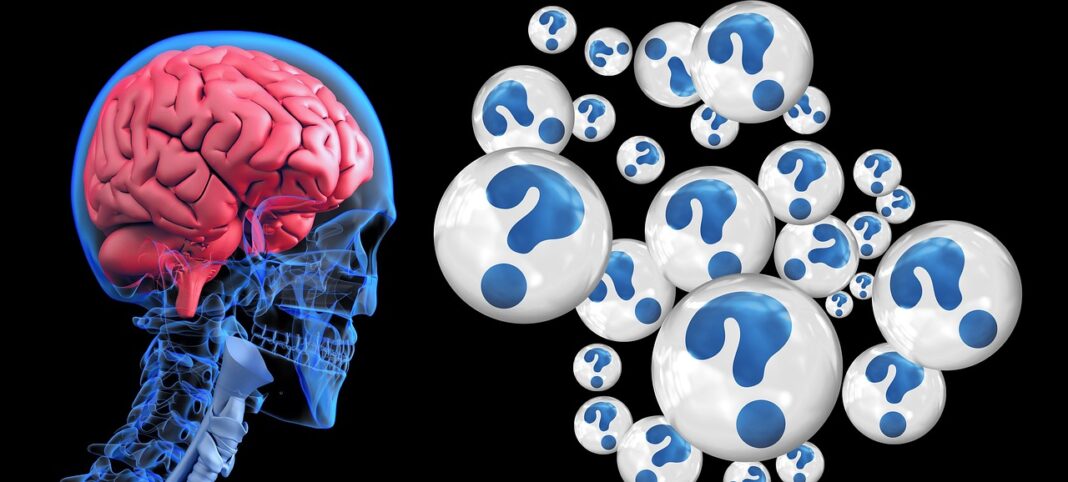Dementia is a term used to describe a group of symptoms associated with a decline in cognitive function. One type of dementia that is less well-known but increasingly being recognized as a significant cause of dementia is frontotemporal dementia (FTD). FTD is a type of dementia that primarily affects the frontal and temporal lobes of the brain, leading to changes in behavior, personality, and language abilities. In this article, we will discuss the symptoms, causes, and treatment of FTD.
Table of contents
What is Frontotemporal Dementia?
Frontotemporal dementia (FTD) is a type of dementia that primarily affects the frontal and temporal lobes of the brain. These regions of the brain are responsible for personality, behavior, and language abilities. FTD is a relatively uncommon form of dementia, accounting for less than 5% of all cases of dementia, but it is increasingly being recognized as an important cause of dementia, particularly in younger people.
FTD is also known by other names, including frontotemporal lobar degeneration (FTLD), Pick’s disease (a type of FTD), and behavioral variant FTD (bvFTD). There are two types of FTD: behavioral variant FTD (bvFTD) and primary progressive aphasia (PPA). The former is characterized by changes in behavior, personality, and social conduct, while the latter primarily affects language abilities.
Symptoms of Frontotemporal Dementia
The symptoms of FTD can vary depending on the specific subtype of the disease. However, some common symptoms of FTD include:
- Changes in behavior and personality: This can include disinhibition, lack of empathy, decreased social awareness, and inappropriate behavior.
- Changes in language abilities: This can include difficulty with speech, comprehension, and word finding.
- Movement disorders: This can include muscle weakness, rigidity, and tremors.
- Executive dysfunction: This can include problems with planning, decision-making, and organization.
Symptoms typically begin gradually and worsen over time, often leading to significant impairment in daily functioning. In some cases, people with FTD may experience hallucinations or delusions.
Causes of Frontotemporal Dementia
The exact cause of FTD is not fully understood, but it is believed to be caused by the accumulation of abnormal proteins in the brain. In particular, FTD is associated with the accumulation of two types of abnormal proteins: tau and TDP-43.
Tau is a protein that helps stabilize the structure of nerve cells in the brain. In FTD, tau accumulates in nerve cells in the frontal and temporal lobes, leading to their degeneration. TDP-43 is another protein that plays a role in RNA processing, and its accumulation is also associated with FTD.
There is also a genetic component to FTD, with mutations in several genes being associated with an increased risk of developing the disease. These include the MAPT, GRN, and C9orf72 genes. However, not all cases of FTD are caused by genetic factors, and the majority of cases occur sporadically.
Diagnosis of Frontotemporal Dementia
Diagnosing FTD can be challenging, as the symptoms can be similar to other types of dementia, such as Alzheimer’s disease. A diagnosis of FTD typically involves a combination of tests, including:
- Medical history and physical exam: The doctor will ask about symptoms and perform a physical exam.
- Cognitive and neuropsychological testing: This involves a series of tests to assess cognitive function, including memory, language, and problem-solving skills.
- Brain imaging: This can include magnetic resonance imaging (MRI) or computed tomography (CT) scans to look for changes in the brain that are associated with FTD.
- Blood tests: These may be done to rule out other potential causes of cognitive decline, such as vitamin deficiencies or infections.
In some cases, a brain biopsy may be necessary to confirm a diagnosis of FTD. However, this is a rare procedure and is typically only done in cases where the diagnosis is uncertain.
Treatment of Frontotemporal Dementia
Currently, there is no cure for FTD, and treatment is primarily focused on managing symptoms and improving quality of life. Treatment options for FTD include:
- Medications: Antidepressants and antipsychotics may be used to treat behavioral symptoms, while cholinesterase inhibitors may be used to treat cognitive symptoms in some cases.
- Speech and language therapy: This can be helpful in improving language abilities and communication skills.
- Occupational therapy: This can help people with FTD to maintain their independence and improve their ability to perform daily tasks.
- Support groups: Support groups can provide emotional support and practical advice for people with FTD and their caregivers.
It is important to note that the effectiveness of these treatments can vary depending on the individual, and there is currently no cure for FTD.
Living with Frontotemporal Dementia
FTD can be a challenging disease to live with, both for people with the disease and their caregivers. Some tips for living with FTD include:
- Educate yourself about the disease: Understanding the symptoms and progression of FTD can help you to better manage the disease and plan for the future.
- Seek support: Joining a support group or working with a therapist can provide emotional support and practical advice for managing the challenges of FTD.
- Maintain a routine: Establishing a routine can help to reduce anxiety and confusion for people with FTD.
- Stay active: Regular physical activity can help to improve mood and cognitive function, and may also help to slow the progression of the disease.
Future research and outlook
Research into frontotemporal dementia (FTD) is ongoing, and there are currently several promising avenues of research. These include:
- Developing biomarkers: Biomarkers are biological indicators that can be used to detect the presence of a disease. Developing biomarkers for FTD could help with early diagnosis and monitoring of the disease.
- Identifying new treatment targets: Research into the underlying mechanisms of FTD is helping to identify new targets for treatment, including the accumulation of abnormal proteins in the brain.
- Developing gene therapies: Gene therapies may hold promise for treating FTD caused by genetic mutations.
Overall, the outlook for people with FTD is improving as more is learned about the disease and new treatment options are developed.
Conclusion
Frontotemporal dementia is a type of dementia that primarily affects the frontal and temporal lobes of the brain, leading to changes in behavior, personality, and language abilities. While there is currently no cure for FTD, treatment options are available to manage symptoms and improve quality of life. With ongoing research, the outlook for people with FTD is improving, and there is hope for new treatments in the future.
Bibliography
- Grossman, M. (2017). The non-fluent/agrammatic variant of primary progressive aphasia. The Lancet Neurology, 16(7), 545-555.
- Lashley, T., Rohrer, J. D., Mead, S., & Revesz, T. (2015). Review: An update on clinical, genetic and pathological aspects of frontotemporal lobar degeneration. Neuropathology and Applied Neurobiology, 41(7), 858-881.
- Piguet, O., & Hodges, J. R. (2018). Frontotemporal dementia. In Handbook of Clinical Neurology (Vol. 145, pp. 383-405). Elsevier.
- Rascovsky, K., Hodges, J. R., Knopman, D., Mendez, M. F., Kramer, J. H., Neuhaus, J., … & Miller, B. L. (2011). Sensitivity of revised diagnostic criteria for the behavioural variant of frontotemporal dementia. Brain, 134(9), 2456-2477.
- Rohrer, J. D., Nicholas, J. M., Cash, D. M., van Swieten, J., Dopper, E., Jiskoot, L., … & Warren, J. D. (2015). Presymptomatic cognitive and neuroanatomical changes in genetic frontotemporal dementia in the Genetic Frontotemporal dementia Initiative (GENFI) study: a cross-sectional analysis. The Lancet Neurology, 14(3), 253-262.
- Van Swieten, J. C., Heutink, P., & Van der Zee, J. (2014). Frontotemporal dementia: recent advances and future directions. Alzheimer Disease and Associated Disorders, 28(4), 301-306.



 For all latest articles, follow on Google News
For all latest articles, follow on Google News